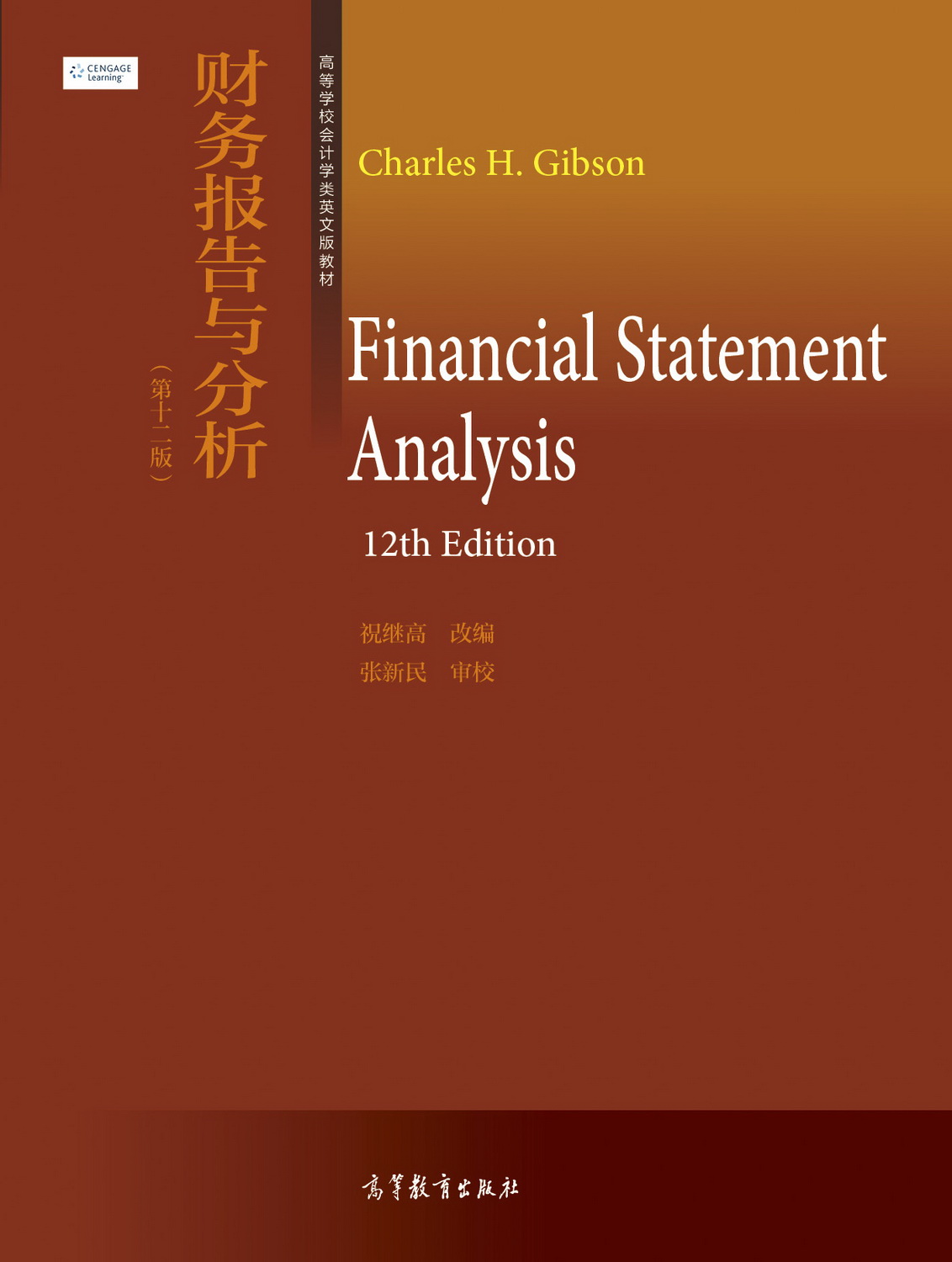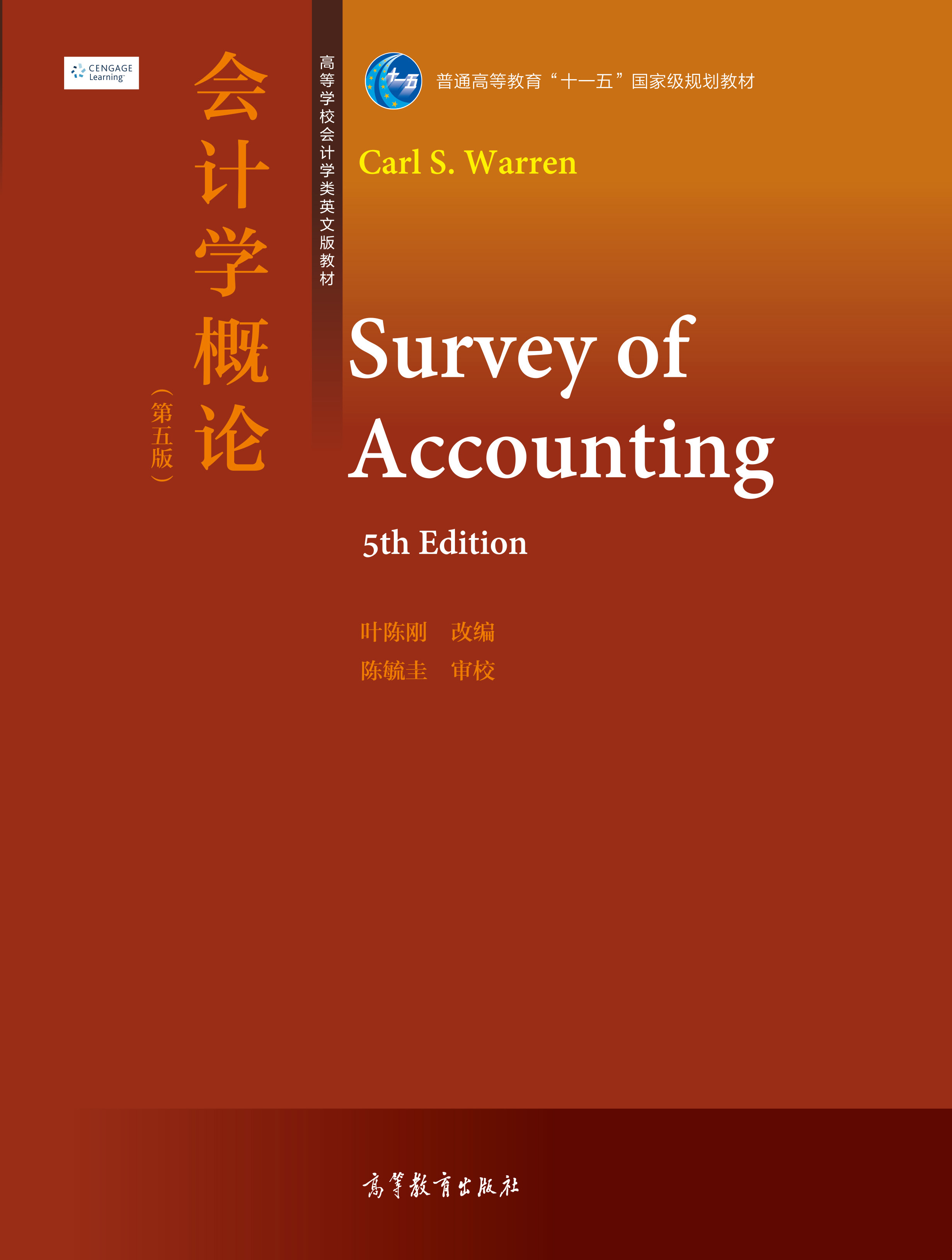财务报告与分析(第十二版)
作者: Charles H.Gibson(著) 祝继高(改编)
出版时间:2020-09-25
出版社:高等教育出版社
- 高等教育出版社
- 9787040523904
- 1
- 498114
- 平装
- 16开
- 2020-09-25
- 640
- 428
本书讲述了企业财务报告的基本内容和基本分析方法。全书站在投资者等企业利益相关者的角度对企业的财务报告进行解读与分析,以便做出正确的经营决策。全书共有11章,前10章系统地讲解了企业财务报告的基本内容和基本分析方法,第11章以某上市公司为实例,展示了系统化的财务分析方法,主要讨论了商业贷款机构、公司控制者、注册会计师、特许财务分析师以及年度报告等方面所采用和关注的财务比率和其他相关问题。全书各章之后均安排了大量具有极强针对性的思考题、练习题和案例。
本书非常适合作为大学经济、管理类专业高年级学生以及MBA学生学习“财务报告分析”课程的教材。
前辅文
Chapter1 Introduction to Financial Reporting
Development of Generally Accepted Accounting Principles (GAAP) in the United States
Additional Input—American Institute of Certified Public Accountants (AICPA)
Emerging Issues Task Force (EITF) A New Reality
Traditional Assumptions of the Accounting Model
Summary
Questions
Problems
Cases
Chapter2 Introduction to Financial Statements and OtherFinancial Reporting Topics
Forms of Business Entities
The Financial Statements
The Accounting Cycle
Auditor’s Opinion
Management’s Responsibility for Financial Statements
The SEC’s Integrated Disclosure System
Proxy
Summary Annual Report
The Efficient Market Hypothesis
Ethics
Harmonization of International Accounting Standards
Consolidated Statements
Accounting for Business Combinations
Summary
Questions
Problems
Cases
Chapter3 Balance Sheet
Basic Elements of the Balance Sheet
Summary
Questions
Problems
Cases
Chapter4 Income Statement
Basic Elements of the Income Statement
Special Income Statement Items
Income Taxes Related to Operations
Earnings per Share
Retained Earnings
Dividends and Stock Splits
Summary
Questions
Problems
Cases
Chapter5 Basics of Analysis
Ratio Analysis
Common-Size Analysis (Vertical and Horizontal)
Year-to-Year Change Analysis
Financial Statement Variation by Type of Industry
Review of Descriptive Information
Comparisons
Relative Size of Firm
Other Library Sources
The Users of Financial Statements
Summary
Questions
Problems
Cases
Chapter6 Liquidity of Short-Term Assets; RelatedDebt-Paying Ability
Current Assets, Current Liabilities, and the Operating Cycle
Current Assets Compared with Current Liabilities
Other Liquidity Considerations
Summary
Questions
Problems
Cases
Chapter7 Long-Term Debt-Paying Ability
Income Statement Consideration when Determining Long-Term Debt-PayingAbility
Balance Sheet Consideration when Determining Long-Term Debt-PayingAbility
Special Items That Influence A Firm’s Long-Term Debt-Paying Ability
Joint Ventures
Summary
Questions
Problems
Cases
Chapter8 Prof itability
Profitability Measures
Trends in Profitability
Segment Reporting
Revenues by Major Product Lines
Gains and Losses from Prior Period Adjustments
Comprehensive Income
Pro-Forma Financial Information
Interim Reports
Summary
Questions
Problems
Cases
Chapter9 For the Investor
Leverage and Its Effects on Earnings
Earnings per Common Share
Price/Earnings Ratio
Percentage of Earnings Retained
Dividend Payout
Dividend Yield
Book Value per Share
Stock Options (Stock-Based Compensation)
Restricted Stock
Stock Appreciation Rights
Summary
Questions
Problems
Cases
Chapter10 Statement of Cash Flows
Basic Elements of the Statement of Cash Flows
Financial Ratios and the Statement of Cash Flows
Alternative Cash Flow
Summary
Questions
Problems
Cases
Summary Summary Analysis Nike, Inc. (includes 2009 Financial Statements of Form 10-K)
Nike—Background Information
Other
Nike 2009
Chapter11 Expanded Analysis
Financial Ratios as Perceived by Commercial Loan Departments
Financial Ratios as Perceived by Corporate Controllers
Financial Ratios as Perceived by Certified Public Accountants
Financial Ratios as Perceived by Chartered Financial Analysts
Financial Ratios Used in Annual Reports
Degree of Conservatism and Quality of Earnings
Forecasting Financial Failure
Analytical Review Procedures
Management’s Use of Analysis
Use of LIFO Reserves
Graphing Financial Information
Management of Earnings
Summary
Questions
Problems
Cases
Bibliography









